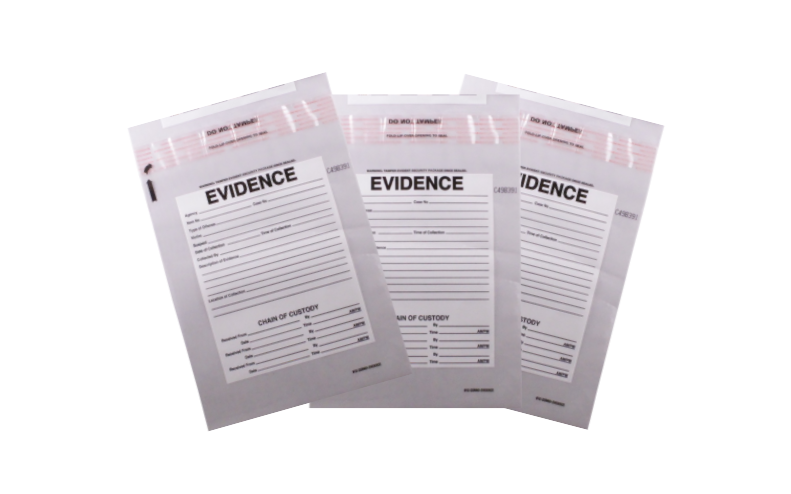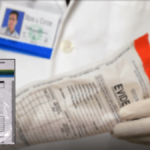Ensuring Secure Supply Chains: Tamper-Evident Packaging Best Practices

Ensuring the safety of the products is quite important as they move through the supply chain. Therefore, the role of tamper-evident packaging becomes quite important in this scenario. After all, such packaging types ensure protection against damage, tampering, theft, and contamination.
From pharmaceuticals to electronics, food products to cosmetics, tamper-evident packaging assures consumers and businesses alike that the integrity of the goods has been maintained from production to delivery. In this blog post, we’ll explore the significance of tamper-evident packaging and delve into some best practices to implement for a secure supply chain.
Understanding Tamper-Evident Packaging:
Tamper-evident packaging is a type of packaging that makes any sign of interference or tampering visible. These signs are designed to be immediately noticeable, alerting consumers and handlers to potential issues with the product’s integrity. Tamper-evident features can range from simple seals and tapes to more advanced technologies such as holographic seals, specialized labels, or even embedded tracking devices.
The Importance of Tamper-Evident Packaging:
Consumer Safety:
Tamper-evident packaging plays a crucial role in safeguarding consumer safety. It helps reach the product intact to the consumers, minimizing the risk of adulteration and contamination.
Brand Protection:
For businesses, tamper-evident packaging helps protect their brand reputation. Using tamper-evident packaging lets you show a commitment to product security. It helps build trust with your customers and gives them a competitive edge.
Regulatory Compliance:
Some industries such as food and pharmaceuticals have to follow more strict regulatory requirements than others. They need to maintain product safety and integrity. By using tamper-evident packaging, they can comply with these regulations and avoid legal hassles and penalties.
Best Practices for Tamper-Evident Packaging:
Visible Tamper-Evident Seals:
Incorporate highly visible seals or closures that are designed to break upon any attempt to open the packaging. These seals should be prominently displayed and difficult to replicate, making it evident if tampering has occurred.
Unique Identification:
Implement unique identifiers such as serial numbers, barcodes, or RFID tags on packaging materials. These identifiers can help track products throughout the supply chain and provide a means of verification for authenticity.
Multiple Layers of Protection:
Utilize multiple layers of tamper-evident features to increase security. For example, combine tamper-evident seals with shrink wrapping or blister packaging for added protection.
Regular Inspections and Audits:
Establish procedures for regular inspections and audits of tamper-evident packaging systems. This ensures that any issues or weaknesses in the packaging design are identified and addressed promptly.
Employee Training:
Provide comprehensive training to employees involved in handling and packaging products. They should be educated on the importance of tamper-evident packaging and trained to recognize signs of tampering or suspicious activity.
Collaboration with Suppliers:
Work closely with suppliers to ensure the integrity of raw materials and components used in packaging. This includes vetting suppliers for their security measures and establishing protocols for the handling and transportation of materials.
Continuous Improvement:
Regularly review and update tamper-evident packaging strategies to stay ahead of evolving threats and technologies. This may involve investing in new security features or adopting industry best practices.
Best Practices for Tamper-Evident Packaging in Supply Chains
Understand the Risks:
The first step in implementing effective tamper-evident packaging is to comprehensively understand the potential risks associated with your specific supply chain. Conduct a thorough risk assessment to identify vulnerable points where tampering could occur, whether during transportation, storage, or distribution.
Select Appropriate Packaging:
Not all products require the same level of tamper-evident packaging. Select packaging solutions that are tailored to the unique characteristics of your products and supply chain. This may include seals, tapes, labels, or specialized closures designed to provide clear evidence of tampering.
Integrate Technology:
Leverage technology to enhance the security of tamper-evident packaging. This could involve incorporating features such as RFID tags, QR codes, or holographic labels that can be easily verified to ensure authenticity and detect any signs of tampering.
Implement Multiple Layers of Protection:
Adopt a multi-layered approach to tamper-evident packaging by combining different security features. For example, use both physical barriers like shrink wrap and digital authentication methods to create a more robust defense against tampering.
Train Personnel:
Educate employees involved in the handling and distribution of products about the importance of tamper-evident packaging and how to properly identify signs of tampering. Implement clear protocols for reporting any suspicious activity or packaging breaches.
Regular Inspections and Audits:
Make sure to perform regular inspections and audits across the supply chain. It will help you determine the quality and efficiency of your tamper-evident packaging. For example, you can check the packaging for any signs of tampering during storage, delivery, or transportation.
Establish Chain of Custody:
Another thing to do is to maintain a detailed chain of custody documentation. It is important to track the movement of products from manufacturer to end consumer.
This documentation should include information about when and where tamper-evident packaging was applied and any instances where it was inspected or breached.
Collaborate with Partners:
Foster collaboration with supply chain partners, including manufacturers, distributors, and retailers, to establish standardized tamper-evident packaging protocols.
By teaming up with them, you can improve the strength of the security of the entire supply chain ecosystem.
Keep Abreast of Emerging Trends:
Stay updated with the latest developments in the tapering techniques.
This may involve investing in new solutions or updating existing ones to stay ahead of evolving threats.
Maintain Transparency with Consumers: Build trust with consumers by being transparent about your tamper-evident packaging measures. Communicate the steps you’re taking to secure products and provide information on how consumers can verify the authenticity of the packaging themselves.
Conclusion:
Custom printed tamper-evident packaging bags are an essential component of a secure supply chain, protecting against tampering, theft, and contamination. By implementing best practices such as visible seals, unique identification, and regular inspections, businesses can enhance the security of their products and build trust with consumers. As threats to supply chain integrity continue to evolve, companies must remain vigilant and proactive in safeguarding their goods.
By having a strong tamper-evident packaging strategy, you can minimize risks and ensure the safety of your products.
Share:
Get A Quick Quote
Social Media
Most Popular

How to Choose the Right Bullet Casing Evidence Bags

Choosing Sustainability: Biodegradable Bags for Soil

A Comprehensive Guide to Seed Packaging Methods
Categories
Tags
Related Posts
RFID vs. Barcodes for Evidence Tracking: A Side-by-Side Analysis
Automated identification technology (AIT), such as barcoding and radio frequency identification (RFID), is increasingly used by forensic labs and law enforcement to track and manage

How to Choose the Right Bullet Casing Evidence Bags
Bullet casings are one of the most common pieces of evidence collected from crime scenes, and their preservation is crucial for investigations. Choosing the right

Choosing Sustainability: Biodegradable Bags for Soil
In our quest for a greener planet, every little choice matters. And one choice that’s gaining traction in recent years is opting for biodegradable bags
